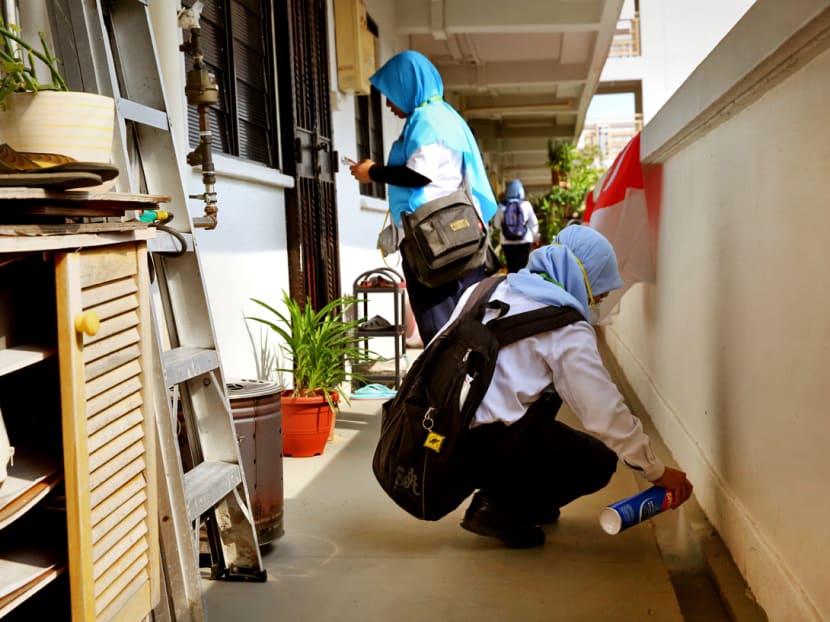Wolbachia study: What you need to know
SINGAPORE — The National Environment Agency (NEA) on Tuesday (Oct 18) kicked off the second phase of a study into how Wolbachia-carrying Aedes aegypti mosquitoes can help curb disease-bearing the mosquito population. It released about 3,000 male Wolbachia-carrying Aedes aegypti mosquitoes in Braddell Heights on Tuesday.

NEA officers spray insecticide in drains and conduct house checks for mosquitoes. Measures are taken to control the Aedes mosquito population in Singapore. TODAY file photo
SINGAPORE — The National Environment Agency (NEA) on Tuesday (Oct 18) kicked off the second phase of a study into how Wolbachia-carrying Aedes aegypti mosquitoes can help curb disease-bearing the mosquito population. It released about 3,000 male Wolbachia-carrying Aedes aegypti mosquitoes in Braddell Heights on Tuesday.
Here are some information on the study, which will span six months.
What is Wolbachia?
Wolbachia is a naturally-occurring bacteria found in over 60 per cent of insect species, but not in the dengue-carrying Aedes aegypti mosquito. Wolbachia has not been shown to infect humans or other mammals, even when carried by biting insects.
How does this study work?
The local Aedes aegypti mosquito does not carry Wolbachia naturally. The National Environment Agency’s Environmental Health Institute managed to rear Aedes aegypti mosquitoes carrying the Wolbachia in their laboratories, and will be releasing only the male Wolbachia-carrying mosquitoes to mate with female Aedes mosquitoes.
Eggs produced from their mating will not hatch because they are biologically incompatible.
Over time, it is hoped that this will reduce and suppress the Aedes aegypti mosquito population, as well as the potential spread of diseases such as dengue.
Why these three sites?
The NEA said they were selected because:
- They represent a cross-section of typical housing estates in Singapore;
- They have seen dengue outbreaks previously and/or have Aedes aegypti mosquitoes present in the environment;
- The NEA has been monitoring the mosquito population in these sites for up to three years, so there is a baseline from which to make comparative studies.
Where else?
Countries that have tested Wolbachia technology similar to what NEA is using include the United States, Thailand and China.
Australia, Vietnam and Indonesia have tested a different type of Wolbachia technology to replace the Aedes population to block the transmission of diseases, though its impact on dengue has not been proven.
The other approach involves releasing both male and female Wolbachia-carrying Aedes aegypti mosquitoes. As Wolbachia is passed on from the female Wolbachia-carrying Aedes aegypti mosquitoes to their offspring, this method is used to rear subsequent generations of Wolbachia-carrying Aedes aegypti.






